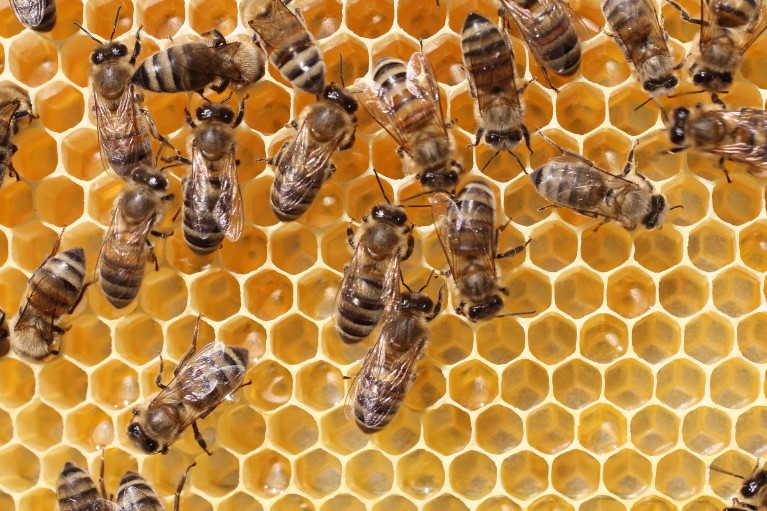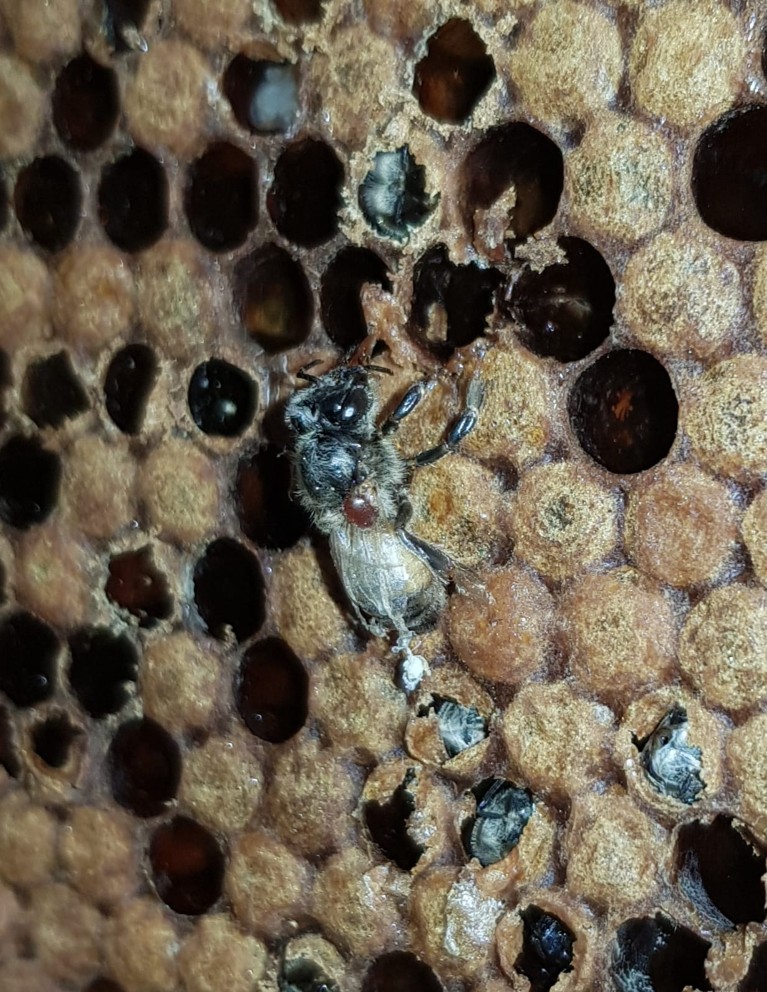
Apis mellifera. Credit: Inventori/Getty Images.
Bee populations worldwide are threatened by several risks, such as climate change and changes in land use as a result of farming. A recent additional threat are invasive parasites such as the mite Varroa destructor, originally from Asia, but now spread worldwide. The mites parasitize the bees, weakening adults and brood, and also transmit viruses to the colony. European bees have few defence mechanisms against this parasite, but a new study led by Michelina Pusceddu, from the Deparment of Agricultural Science at Università di Sassari, shows that the insects, like humans, might avoid infection by maintaining social distancing.
The team studied bee interactions, both between individuals and between different age groups, by filming beehives in the field and smaller bee groups in laboratory cages. In infested beehives, the foraging dances performed by the older workers to tell others where to find food were shifted toward the periphery of the colony, and further from the brood cells, where larvae are developing. “Social distancing among foragers and nurse bees could be a strategy adopted at colony level to limit infestations,” says Pusceddu.

Emerging bee infected by Varroa. Credit: Università di Sassari.
The team also observed that nurse bees deep within the hive groomed each other at a higher frequency in infested hives than in Varroa-free hives. Grooming can reduce the spread and incidence of parasitism and occurred more frequently in the areas occupied by the vulnerable brood than in peripheral areas. “Once it arrives in the colony through an infested forager, the mite uses chemical signals to find a nurse bee and jump on it, using it to get to the brood cells, where it reproduces” says Pusceddu. The frequent grooming among nurses in the core area, where bees carrying mites might emerge, could be another defence mechanism to protect the colony.
A different picture emerged from cage experiments with just a few insects of the same age. Here, infested bees interacted more frequently with others by grooming, rubbing antennae and exchanging food. This suggests that honey bees may choose different protective social behaviours depending on the size of the group. “However,” says Pusceddu, “we do not have yet any results about the efficacy of those behaviours in controlling the infestation, and further studies are needed”.
“This is a new interesting piece in the puzzle of social immunity strategies adopted by insects,” says Donato Grasso, associate professor at Università di Parma and an expert in social insect behaviour, who was not involved in this study. “It adds further evidence of the mechanisms that can be used to cope efficiently with parasites and diseases”.
Social distancing as a behavioural response to disease, concludes the study, is certainly costly for all social animals. But the widespread use of this strategy in nature suggests that the benefits might outweigh the costs.
